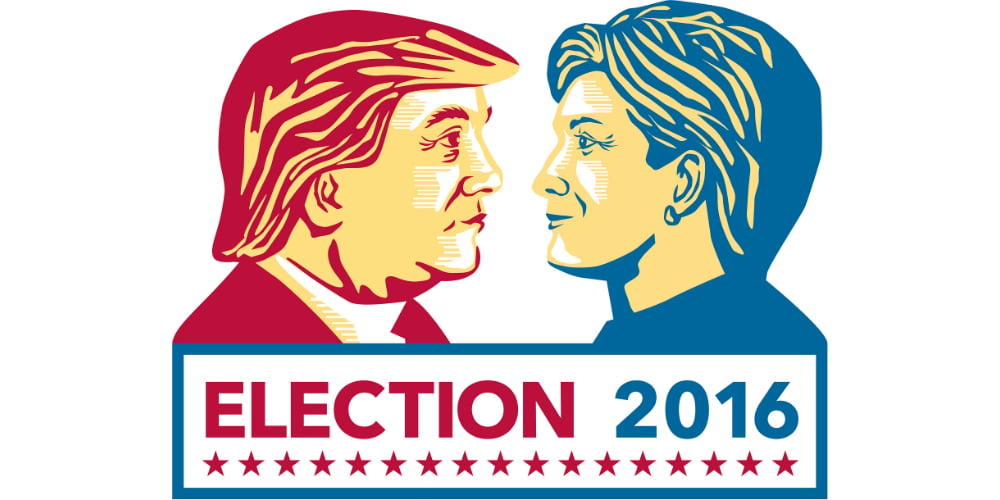Trump vs Clinton: Voting for your financial future
How each leading candidate's policies will effect your finances

Taxes
Clinton
Clinton is not changing the marginal tax brackets, but would revise taxes on the highest earning Americans in a few ways. Her plans call for higher taxes on those who make more than $250,000 annually. In addition, she has plans for something called “The Buffett Rule,” which would place a minimum 30% tax rate on households that earn over $1 million annually. With an additional 4% “Fair Share Surcharge” for 2 out of every 10,000 taxpayers that have a gross adjusted income over $5 million. She also plans to lower the estate-tax exemption from the current $5.45 million to $3.5 million and raise the top estate tax to 45%.
Trump
Trump plans on reducing the number of tax brackets from seven to three. He would place a 12% rate on Americans who earn less than $75,000 annually, 25% on those that earn $75,000-$225,000, and those who earn more than $225,000 would face a 33% rate. Which is a 6.6% break for the highest earners from the current plan. In a speech he gave in Detroit earlier this year, he pledged he would also deduct child-care expenses from income taxes. Trump also has plans to do away with both alternative minimums tax and estate tax.
What it means for you
Clinton’s approach would cost wealthy families the most, while they would benefit from a number of breaks under Trump. Regardless of who is elected or what plan is put into place should either revise along the way, make sure that you are paying attention to how your investments will be effected by new tax plans.
Social security
Clinton
Clinton seeks to expand Social Security by increasing benefits for widows and giving credit to workers who takes leave to care for family members in need. To raise these additional funds, she would increase the level of annual wages subject to payroll taxes. Clinton also opposes any attempts “to close the long-term shortfall on the backs of the middle class.”
Trump
Trump has stayed consistent with his stance on not imposing any changes to Social Security. Back in May of last year he tweeted that there will be no cuts to Social Security, Medicare and Medicaid. This month he echoed those words again continuing to promise no changes.
What it means for you
With the number of workers with defined-contribution plans such as 401(k)s on decline, Social security benefits have never been more important for the majority of Americans. All of the headlines about Social Security benefits going way soon are not entirely wrong, they just have the timeline wrong. If no changes happen to the program by 2035 automatic reduction in benefits will kick in, where those who claim will only receive roughly 80% of their scheduled benefits.
Jobs and Wages
Clinton
Clinton’s campaign has promised “the largest investment in good paying jobs since WWII.” Proposing a $275 billion plan to rebuild U.S. Infrastructure, the creation of jobs in alternative energy and support for small manufacturers. She plans to gradually raise the minimum wage from $7.25 to $12 an hour.
Trump
Trump has promised to make America “the best place in the world to get a job.” He plans to roll back regulation on energy and other industries, rework trade agreements and spend more than $500 billion on infrastructure. He said that minimum wage should be up to the states, but also talked about imposing a $10 an hour federal floor.
What it means for you
Raising minimum wage will arguably cost us jobs in many cities across the country. Some studies have found that if businesses were to face higher operating costs due to the wage increases, they would have to charge higher prices for goods and services. Other studies have found there would be no change, as turnover rates for minimum wage jobs would be lower, saving on early employment costs. Even if the wage change doesn’t affect you, the prospective job growth can.
Student loan debt
Clinton
Clinton calls for giving current debtors the ability to refinance, a grant system that would encourage states to offer cheaper four-year degrees, and free community college. In the first debate on September 26th she referred to “debt-free” college which most likely refers to her plan to make tuition free for in-state students who go to a public college. This plan covers students from households with incomes up to $85,000 – with a rising cap at $125,000 by 2021.
Trump
Until recently Trump’s only comment on the student loan crisis came from a Twitter AMA video, but now he has elaborated on his website. He pledges to “work with Congress on reforms to ensure universities are making a good faith effort to reduce the cost of college and student debt in exchange for the federal tax breaks and tax dollars and to ensure that the opportunity to attend a two or four-year college, or to pursue a trade or a skill set through vocational and technical education, will be easier to access, pay for, and finish.” Check that quote.
What it means for you
Those who are still paying off student debts or have a child who is about to take on some, should pay very close attention to these policies. With millennials more vocal than ever on these issues, you can be sure they will continue to be covered. ?? It is worth noting however that neither candidate has suggested treating it like consumer debt, which is dischargeable in bankruptcy.





